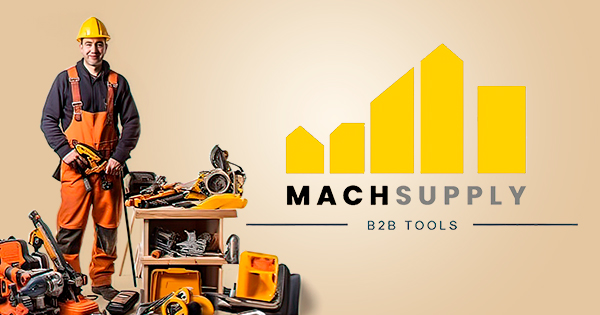If you can dream it, you can do it – a closer look at prototyping

In the not-too-distant future, you may very well be reading this article from the inside of your colour-changing BMW. No one will even know, as you’ll be reading it on what looks like just another pair of black-tinted sunglasses. Modern-day prototypes (as seen at CES 2022) are showing us that design thinking works and that it’s not going anywhere. In this article, we unpack prototyping: what is it, why do we do it and the rules we swear by. We’ll also show you some examples of prototype success stories (and failures), and how Emakina UX teams use prototyping to create successful digital products.
Prototyping (what is it REALLY?)
According to Adobe, at its core, a prototype is an early sample of a design that allows users to visualise or interact with it before a final product is developed. Prototyping is also the fourth step in the Design Thinking process, of which there are five: Empathise, Define, Ideate, Prototype and Test. These five phases are used by teams to understand users, challenge assumptions, redefine problems and create innovate solutions to prototype and test. If you’d like to explore what prototyping means in more detail, read on over here.
Why do designers prototype?
Well, because it’s important. Prototypes are a means to iterate an idea and make it evolve. It makes you ask yourself the right questions, then make an actual test in the field to validate or invalidate hypotheses. Through rapid prototyping, designers are forced to get critical about their ideas and simplify them to their very core. And there’s a certain beauty in simplicity, don’t you think? Not only this, but it also saves time, energy and resources.
It helps you iterate your ideas and concepts quicker. Prototyping is also a great way for you to fail early and quickly. Because it can happen that you’re wrong about something or can make a mistake. We all do and that’s ok. What you need to do is mitigate the negative impact of your mistakes.
Here are six benefits of prototyping:
- Once used with design thinking, prototyping becomes much more powerful and a creative tool in its own essence.
- It helps to stimulate discussions, make them move forward, or get things concrete, not only in your mind, but also in the minds of others.
- It helps you, your team or your clients learn and discover.
- It’s a means to experiment, which can make the learning process smoother or more beneficial.
- Once the prototype helps you make things more concrete, it can also show how things work (or are supposed to) and convince others.
- Getting things outside the world of ideas and making it real, concrete, not just words is also going to allow you to test your ideas and overall give you input data for a more informed decision making.
3 rules to follow for prototyping
Rule number 1: Keep it lean
It’s much more cost effective to fix a mistake on a project or design that hasn’t been made yet, which is the whole point of prototyping. But it’s also important to set a budget (and stick to it) when prototyping. And remember that your budget could be as small as ‘paper ideas’ only. It doesn’t have to include expensive software or developers until as late as the beta stage.
Rule number 2: Whatever you do, don’t fall in love.
This is important because prototyping is NOT about what you think is a great idea. It’s about what others think is a great idea. And often, it means your idea will have to change. It could even require a complete redesign. A prototype is a work in progress and the less precious you are about it, the quicker it will evolve.
Rule number 3: Don’t be afraid to fail!
This is a biggie, and one with many valuable lessons we’d like to elaborate on.
“As you make a prototype, assume you are right and everyone else is wrong. When you share your prototype, assume you are wrong and everyone else is right.”
Diego Rodriguez Telechea
It’s interesting to note that Google does not supply us with that many examples of design prototypes (considering how often it is done). The reason for this quite simple – it’s because so many prototypes are considered failures. What would be the point of ‘showing them off’ to the world? When you talk about your projects, your company or your brand, you only want the world to see the success stories, and understandably so. But there are many lessons to be learnt from our failures.
Prototypes success stories
Here are some inspiring examples of prototypes that prove that good products aren’t created overnight:
1 man, 5 127 prototypes
It took James Dyson five years and thousands of prototypes to create the world’s first bagless vacuum cleaner. Today, Dyson is a global technology enterprise that employs over 10 000 people.
A handheld vision
Jeff Hawkins has been credited with creating the entire handheld computing industry. One of the creators of PalmPilot, he was viewed as being ‘crazy’ for walking around with a wooden plank and pretending it was synchronised to his computer.
“30 seconds, not 30 minutes”
The founders of Mc Donald’s prototyped and iterated the kitchen of their restaurant chain by drawing it out in chalk on a tennis court. They risked their whole business failing in order to try this new concept. This led to the creation of the Speedee Service System and the rest, as they say, is history.
For Emakina design teams, prototyping is an integral step in our process and something we like to share with our clients. We work with an agile methodology to create only the best solutions for our clients. Check our cases ⬇️
Want to try something completely out of the box for your brand? We have many digital transformation and product design success stories to draw from. Get in touch with our digital team today for more info on getting your prototype from paper to reality.
Our recent blog posts
See all blogs-
How is AI’s synthetic data enhancing User Experience Research? Technology

-
Web3.AI Rising : How new technology can add value to your business

-
How generative AI helped us create an e-commerce app – with personalised content – in just 2 weeks Technology

-
Can you build a foodie app in 3 days using Generative AI? (Spoiler alert: yes!)

